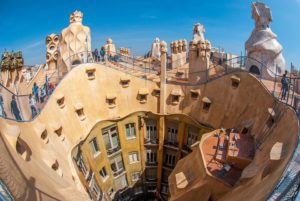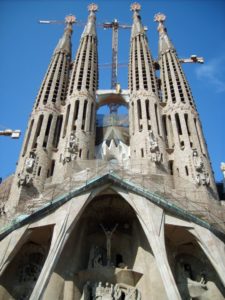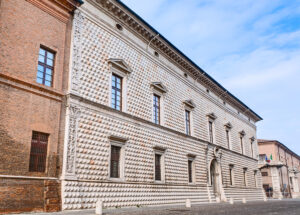 Discover Walking Tours, a tip supported company, offers three options: 1) Gaudi buidlings in Eixample; 2) Ramblas and the Gothic area; 3) and Picasso’s Barcelona in The Born, the medieval section. During our March trip to Barcelona we took all three, and found they were a great orientation to the city. The guides were knowledgeable and entertaining, and it was fun to converse with other travelers.
Discover Walking Tours, a tip supported company, offers three options: 1) Gaudi buidlings in Eixample; 2) Ramblas and the Gothic area; 3) and Picasso’s Barcelona in The Born, the medieval section. During our March trip to Barcelona we took all three, and found they were a great orientation to the city. The guides were knowledgeable and entertaining, and it was fun to converse with other travelers.
On our first day we took the Gaudi Tour in the Eixample section. Eixample was built in the second half of the 18th century, when the city needed to expand north to accommodate an influx of people coming from small villages. Our guide met us at Batllo, Gaudi’s flamboyant house on Passeig de Gracia, one of the major avenues running north and south. Batllo is bedecked with jewels, actually shards of stone from ceramic factories in the surrounding mountains, has window panes in the shape of bones, and an embellished dragon, who’s been killed by St. George, lying on the roof. Our guide explained that the site had been owned by the Guelles, one of the prosperous families at the turn of the century. She explained how Gaudi embellished houses that were the plainer, more typical style. Had we passed by on our own we would not have noticed those outside details, nor would we have gotten tips on images to look for when we returned for a visit on our own. Casa Medea next door had almond shaped windows; its owner, a chocolate maker, was was aptly nicknamed “Mr. Almond.”

As we wove around the back of Battlo and crossed back to La Pedrera, another Gaudi House on Passeig de Gracia, we learned more about the architecture of the city, the differences between Spanish and Catalan languages, and the corners with prominent beer and wine bars. Pedrera had balconies like waterways flowing into the rocks, and chimneys like masked men (see picture at upper left). At the Diagonal Zero subway stop our guide pointed north and told us not to miss Guelle Park with its mosaic terraces and the Gaudi Museum. We went down under, got on the train, and exited at the next stop: Sagrada Familia, Gaudi’s phantasmagorical cathedral that may be finished within the next twenty years. At the end of the tour, we could walk east to the water, walk west to Passiag de Gracia, or north to Guelle Park. The map was making sense now.
The Ramblas and Gothic area and the Picasso Walk through The Born were equally informative and fun. We may not have found the Museum of the City, the ancient Roman city of Bacino, which is located under the main cathedral, had it not been for the walks. It’s by far one of the best archaeological museums I’ve ever been to
https://www.discoverwalks.com/tour/city/barcelona-walking-tours/ (NOTE: Make sure to tip because that is how the company keeps going. Other walking tours run between $10-$15 and upwards.
from → Uncategorized

